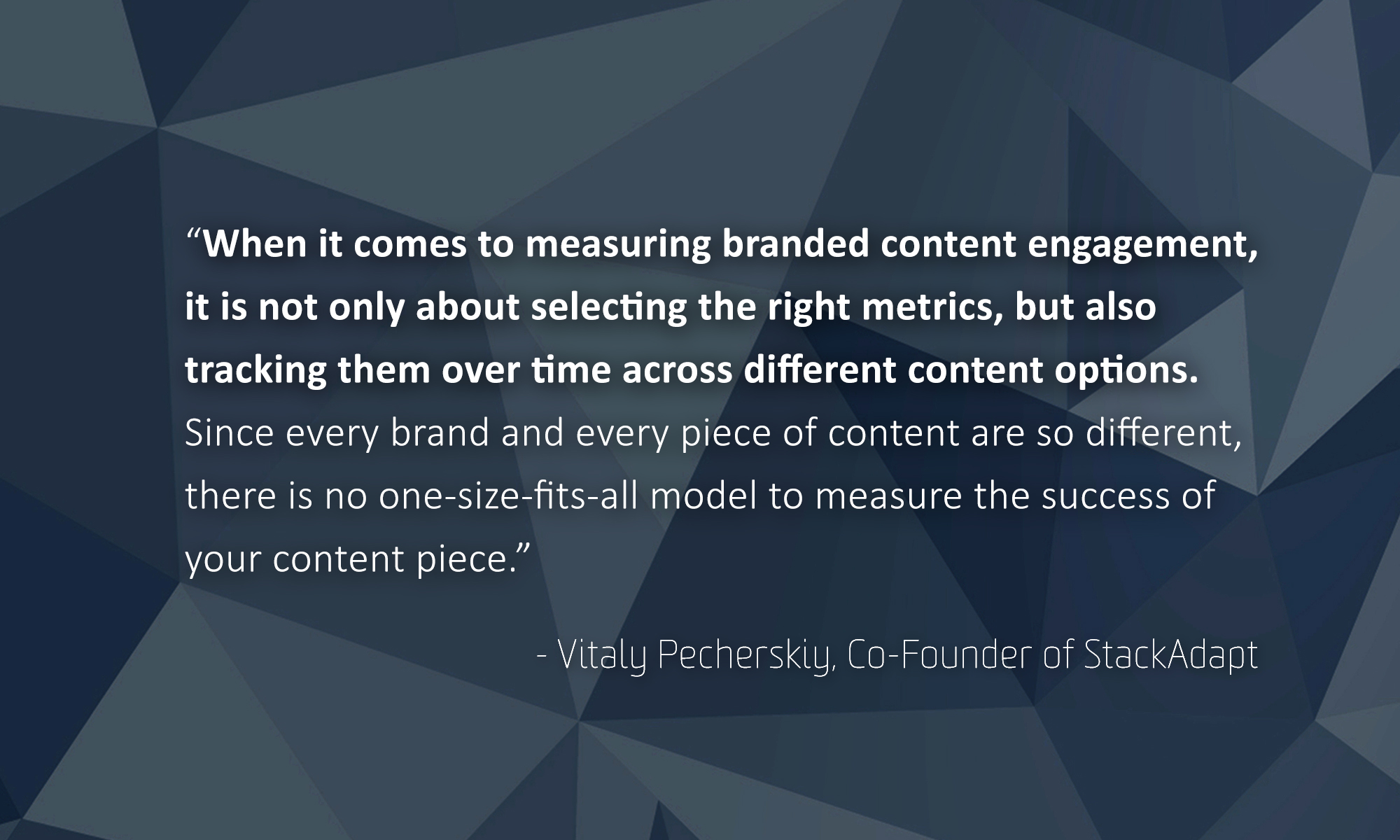Measuring Branded Content Engagement: Understanding Bounce Rate’s Fine Print

GUEST BLOG WRITTEN BY VITALY PECHERSKIY, CO-FOUNDER AND COO OF STACKADAPT.
Follow Vitaly (@vitalypecherski) and StackAdapt (@StackAdapt) on Twitter.
The Custom Content Council estimates that nearly $44bn will be spent on branded content this year (The Guardian). A big topic of discussion is not only content creation, but also content distribution. When it comes to distribution, the important questions to consider are, have you reached the right audience with this content and has the content produced the desired impact?
While the topic of reaching the right audience is fundamental to this discussion, here we’ll focus on the one metric that an overwhelming number of marketers use to measure engagement with branded content: bounce rate.
Bounce rate is commonly defined as the percentage of single-page sessions. It means that if a user arrives at your content, but doesn’t click to another page (regardless of how long they spent on this page), common web analytics tools will see this as a bounce.
While historically this metric may have sufficed, in the context of content-driven advertising, it crumbles. Branded content is often viewed as a tactic to increase awareness and produce purchase intent. When amplifying this branded content through social, organic or paid channels like native advertising, brands invest in order to create content that is as engaging as possible, so users interact with it and share it. It would make little sense to create content to generate awareness or purchase intent with the sole motive of driving users off this page; yet bounce rates advocate exactly that.
It is also interesting to look at the trends in web design and how they affect the bounce rate metric. In the early days of the web, it was standard practice to cram content ‘above the fold.’ The evolution of mobile devices to access this content, forced design gurus to reconsider how pages are viewed across devices. Over the last year, website pages have become longer. This largely helps mobile users easily browse content without having to jump between pages, and instead use a familiar scrolling motion that is adopted by large content-rich websites like Facebook or Twitter. What more designers and marketers understand now is that it is not about presenting all content to a user in one shot, but rather creating an engaging experience in which a brand or a publisher is telling a story that compels users to scroll and to read. While such an approach creates great user experience, most analytics tools punish it because bounce rates on such pages are high. But does that mean that this format of laying out content should be abandoned?
It comes down to taking the goals of the campaigns into consideration.
If you are promoting content to build awareness, then the content on its own may accomplish just that. A user may not have a need to browse your site if he/she learned about your company through this content. In this scenario, where content is the ‘destination,’ other metrics should be used instead: time on site, number of social shares and how far down the page a user has scrolled. Even in the context of having conversion goals, bounce rates may not be a true metric to judge the performance of traffic because conversion may occur on the content pages, such as a user signing up for a newsletter.
If the goal of content is the ‘entry point’ to the website, then you need to understand why a user would be inclined to further browse the site. Does the content to which you drive users only partially solve their questions or pique their curiosity? Are there call-to-action buttons that encourage users to navigate to other pages or content on the site? Answering some of these questions may help determine whether users can be expected to further engage with your site and whether the bounce rate metric should be used.
When it comes to measuring branded content engagement, it is not only about selecting the right metrics, but also tracking them over time across different content options. Since every brand and every piece of content are so different, there is no one-size-fits-all model to measure the success of your content piece. Companies that want to take content seriously should start building internal benchmarks and work on continuously improving them. Only then, when new content or distribution channels are added, can one judge the degree of success of a given content piece.





